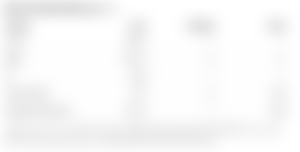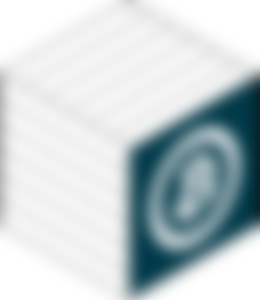
Grayscale is still offering the only investing vehicle for institutional exposure in the cryptocurrency industry.
It allows institutions and accredited investors to place part of their investment portfolio into Cryptocurrency shares of SEC reporting investing mechanisms (Trusts).
Grayscale offers a variety of cryptocurrencies for institutional adoption. It started with its first fund the Grayscale Bitcoin Trust (GBTC).
In later years, it added more cryptocurrencies in its business model with Bitcoin Cash, Ethereum, Litecoin, and ZCash comprising the top selected by investors.
Shares of these trusts have been performing outstandingly for years, however, at the beginning of the year, we observe most of the Grayscale Trusts underperforming in the secondary market of OTCQX and most of them trading at discount to NAV (Net Asset Value).
In this article, we will examine the discrepancies that have lately formed and observe the performance of the top Grayscale Trusts.

A simple explanation about how Grayscale Trusts work
Grayscale's model is different from the cryptocurrency spot markets. It provides shares of each of its Trusts to funds that are interested in crypto exposure and holds the cryptocurrencies in its custody.
In simple terms, Grayscale buys crypto for its customers from the "spot" crypto market, holds this crypto in its wallets (not selling back to "spot"), and gives shares of each cryptocurrency "Trust" to the investors.
These shares have a lockup period of 6-12 months depending on the legal procedures of each Trust. For Bitcoin and Ethereum the lockup period is six months, while for the rest of its assets twelve.
Grayscale's profit is obtained from yearly fees (2.5%) for the services it provides to its customers.

Grayscale offered Trusts/Funds
Grayscale is currently offering the following financial vehicles for institutional crypto-exposure:
Bitcoin (GBTC) (since 2013)
Ethereum (ETHE) (since 2017)
Bitcoin Cash (BCHG) (since 2018)
ZCash
Stellar
Litecoin
Horizen
Latest additions (2021):
Basic Attention Token (BAT)
Chainlink
Decentraland (MANA)
Filecoin
Livepeer

Grayscale also offers two index funds (baskets of cryptocurrencies):
DeFi Fund

Digital Large Cap Fund

Images from Grayscale

XRP Trust
Grayscale used to offer a Ripple-XRP Trust but since January 2021 it decided to dissolve the fund and liquidate the XRP back in the spot market.


Performance of Grayscale's Trusts
GBTC - Grayscale Bitcoin Trust

This is the leading product Grayscale offers. Since its inception, it is outperforming traditional asset classes and was selected by top entrepreneurs, wealthy investors, and institutions like pension and mutual investment funds.
Currently Grayscale manages ~$26 Billion in Bitcoin ($BTC) assets.
GBTC has had extraordinary returns since inception currently sitting at 24,510% (245 times ROI, in 8 years). (the figure has grown to 26,657% since the last edit)

Source of Image: Morningstar
While assessing the risk of GBTC, "Morningstar" places the asset as a high-risk investment. Data is exempt from the historical movement of the price of GBTC during the last 5-years period and the standard deviation of price to the mean.

Important here is the Alpha and Beta trailings.
Alpha measures the difference between a fund's expected returns based on its beta and its actual returns. A positive alpha indicates the fund has performed better than its beta would predict. A negative alpha indicates a fund has underperformed, given the fund's beta.
Beta measures a fund's sensitivity to market movements. A beta greater than one indicates the investment is more volatile than the market. If beta is less than one, the investment is less risky than the market.
Source: Morningstar
In this case, the Beta is 104.74 suggesting the investment of GBTC is extremely volatile, unlike most other asset classes.
However, the risk/reward ratio is giving extremely positive feedback, far outperforming the selected categorization (trading-miscellaneous Index), ICE BofA.

Source: Morningstar
GBTC Discount to NAV
For the first time since its inception in 2013 GBTC is trading at a discount. However, as we can see from the chart, this discount seems to be regulated by the market lately and coming to an end:

While GBTC wasn't very correlated with the price at spot (crypto) exchanges, the persisting double-digit discount was providing a counter indicator to the overall bullish sentiment.
I have also recently written an article explaining that the end of the GBTC discount could indicate an increase in interest by institutions again and an end to the arbitrage speculation the secondary market provides. ("The GBTC Discount Finally Seems Exhausted")

ETHE - Grayscale Ethereum Trust

Ethereum was the second cryptocurrency Grayscale decided to proceed with the creation of a Trust by the ticker of ETHE in December 2017.
It provides cryptocurrency exposure to institutional investors in the Ethereum asset and as with all the rest of Grayscale products, the shares of this Trust are traded on a secondary market, the OTCQX exchange.
Currently, both GBTC and ETHE are registered as SEC reporting funds. Grayscale has also filed three more Trusts (Bitcoin Cash, Litecoin, ETC) to the SEC.
Since its inception, the ETHE Trust has witnessed robust growth of 193.85% and Grayscale has under its management value of $7.3 Billion in Ethereum.

Source: Morningstar
The Ethereum Trust was created at the peak of the 2017 bull run and the asset at a point lost more than 75% since inception. Following the two-year-long bear market, it eventually recovered and produced results close to 200%.
The risk indicators for a 5-year period are not available since the fund is active for less than that.

Source: Morningstar
The 3-year period risk evaluation indicates that ETHE has overperformed in this period but also met huge volatility. This is proven by the huge standard deviation that also points to an extremely high-risk asset.

Source: Morningstar
The high risk also points to extreme returns and in the case of Ethereum the returns in the 3-year period are close to 200%.
Discount to NAV

ETHE is in a similar position to GBTC and traded at a discount for months within OTCQX.
While GBTC seems to be recovering and perhaps will start following the spot market closer, it is possible that the ETHE chart is not a clear indicator of institutional increase in investment.
The Grayscale holdings are not representative either, and as an indicator for a possible change in overall sentiment it is possible one that could lead to incorrect results and have little influence.

BCHG - Bitcoin Cash Trust

The Bitcoin Cash Trust was created in January 2018, just weeks later after the Ethereum Trust.
Its performance since inception has not been as great as the GBTC and ETHE. The reason for that is that Bitcoin Cash was introduced to institutions by Grayscale when its price was peaking at an ATH. The price for BCH on 03 January 2018 was ~$2,500.
BCHG only started trading on the OTCQX exchange about one year ago and while it had seen a huge growth in total since inception it is down by 61.85%, which is attributed to the extreme price valuation of BCH on the inception of the fund.
For the reason that BCHG is traded less than a year, there is no accurate data for performance and risk management.
Analyzing BCHG performance for less than a year is not recommended. A 5-year analysis contains the data we are going to need, so comparing assets that have very little time in a market will not reach good assumptions about performance and risk. The same is with the rest of Grayscale assets that haven't been trading in the secondary market for long enough to analyze.
However, there is data that we can consider having value and one of them is the weekly sales at the OTCQX exchange is watching high volumes at a very low price for the last weeks.

Source: OTCMarkets
The BCHG premium that by the end of 2020 was closing to a value of 2,000% has now evaporated and has also turned into a discount.

Source: Grayscale
The BCHG discount can also be attributed to the generally lower interest shown by institutional investors after the peak of cryptocurrency activity in May and the mining clampdown initiated by China.
However, at price close to historic lows for BCHG volumes are spiking and could be a short-term indicator for a trend reversal. The spot prices for Bitcoin Cash is also performing better in the last few weeks and could be a decisive factor for a change of sentiment by institutions.
I often discuss Grayscale in my articles, and the latest article contains some more information on the performance of GBTC: (Grayscale's Bitcoin Cash Trust to Become SEC Reporting Company).

Conclusion
Analyzing the performance of the rest Grayscale will not be different from Bitcoin Cash.
Litecoin has also been underperforming since it was incepted on the same day with BCH. Besides these assets, the rest like ZCash, Stellar, and Horizen did not enjoy much popularity amongst institutions and remain very lower in volumes.
Those cryptocurrencies added this year are still at a test phase and it is also important to mention Cardano, which has been added in the "Large Cap Fund" representing 3% of each share of this fund, but it still isn't presented as a Single Asset Grayscale Trust.
Timing is always paramount when investing. As retail investors, no matter the potential an asset can represent, we still have to take into account the high risk of the cryptocurrency market.
Institutional investors have different needs, requirements, and vision for these assets.

Images:
Lead Image Source: Unsplash (by Hans Eiskonen) (modified, source (free download))

Active on:
● Read.Cash ● Noise.Cash ●Memo.Cash ●Medium ●Hive ● Steemit ●Vocal ● Minds
Shout-out to my Top Sponsors:
● @CryptoMax ● @TruSuccessXpert ●@btcfork ●@PVMihalache

























